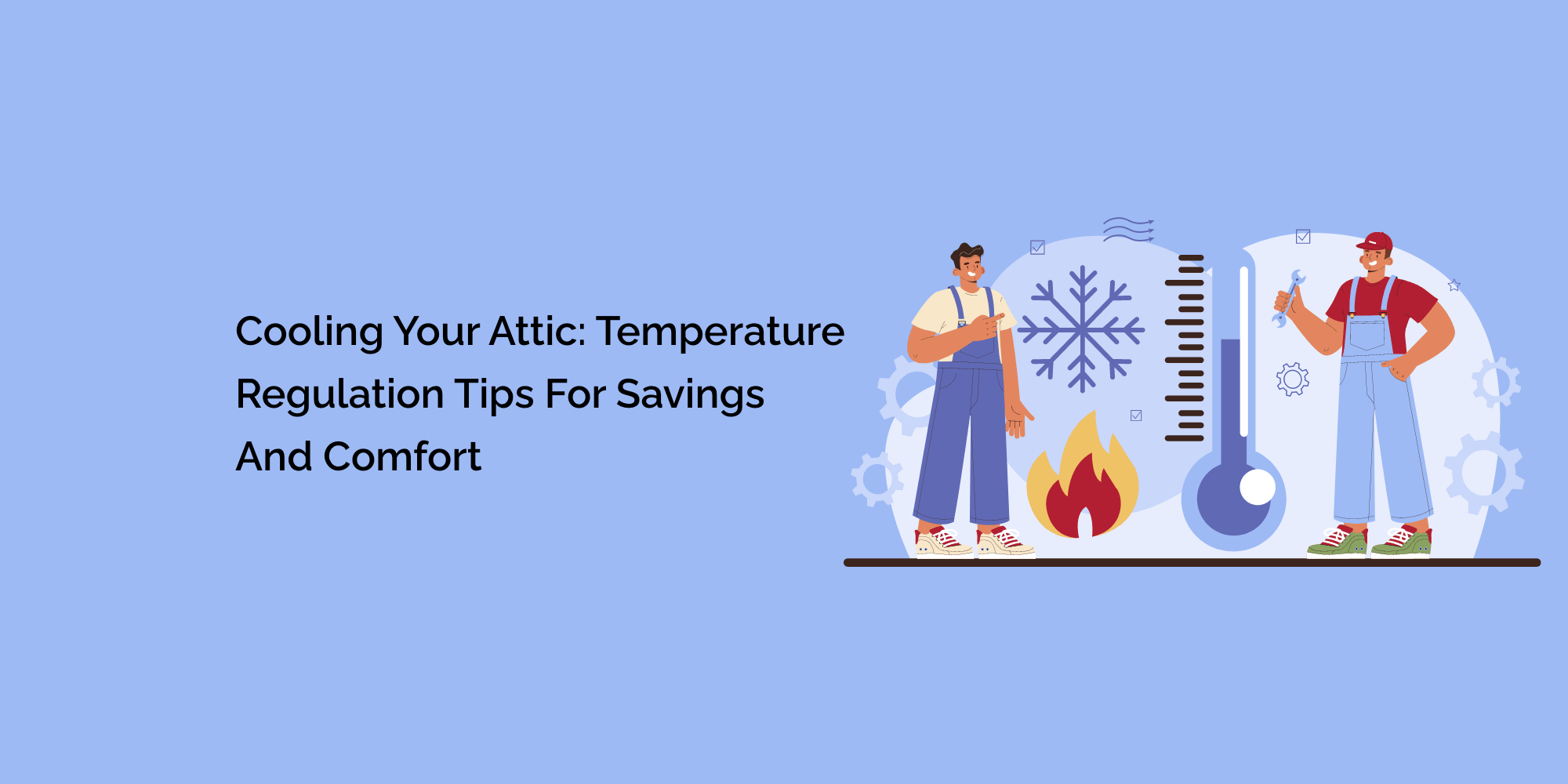The attic is an often overlooked part of the house regarding temperature regulation. However, paying attention to this space can significantly improve your home's energy efficiency, reduce utility bills, and enhance overall comfort. Cooling your attic is especially crucial during the hot summer months when heat can accumulate and affect the temperature of the entire house.
Understanding the Importance of Cooling Your Attic
Before diving into the specific tips, it's essential to understand why cooling your attic matters. Here are a few reasons why attic temperature regulation is crucial:
- Energy efficiency: When your attic is sweltering, it can radiate heat into your living spaces, causing your cooling system to work harder. Keeping your attic cool reduces the strain on your air conditioning, leading to lower energy consumption and reduced utility bills.
- Extended roof lifespan: Excessive heat can deteriorate your roof's materials, leading to premature aging and potential damage. Cooling your attic helps maintain moderate temperatures, extending the lifespan of your roof.
- Comfort and indoor air quality: A hot attic can create uncomfortable conditions in your living spaces, leading to a stuffy, unbearable environment. Cooling your attic creates a more pleasant atmosphere and improves indoor air quality.
Tips for Cooling Your Attic
Attic Ventilation
- Importance of ventilation: Proper attic ventilation reduces heat buildup and moisture accumulation. It allows hot air to escape and fresh air to circulate, keeping the attic cooler. b. Types of vents: Ridge vents, soffit vents, gable vents, and powered vents are standard attic ventilation systems. Consult a professional to determine which option suits your home's needs best. c. Attic fan installation: Installing an attic fan can enhance ventilation and exhaust hot air. Choose from solar-powered or electric fans, depending on your preferences and budget.
Insulation
- Importance of insulation: Adequate insulation is necessary to prevent heat transfer between the attic and living spaces. It helps maintain cooler temperatures in the attic while minimizing the impact on your home's interior. b. Insulation types: Consider using blown-in cellulose or fiberglass insulation to reduce heat transfer effectively. Pay special attention to insulation levels in the attic floor and walls.
Radiant Barriers
- How radiant barriers work: Radiant barriers are reflective materials that reduce the radiant heat transfer between the roof and the attic. They reflect the sun's heat, preventing it from penetrating the attic space. b. Installing radiant barriers: Apply radiant barriers to the underside of the roof rafters or on top of the attic insulation for optimal effectiveness. Follow manufacturer instructions or consult a professional for proper installation.
Reflective Roofing Materials
- Reflective roof coatings: Consider applying reflective roof coatings, such as elastomeric or white membranes, to your existing roof. These coatings have high solar reflectance and thermal emittance, reducing heat absorption and keeping your attic cooler.
- Cool roof installation: If you plan to replace your roof, choose cool roofing materials, such as metal or asphalt shingles, with reflective properties. Cool roofs can significantly reduce heat transfer to the attic.
Shade and Insulate Attic Access Points
- Attic door or hatch: Ensure your attic access points are adequately insulated and sealed. Use weatherstripping or insulation to prevent heat transfer between the attic and the rest of your home. b. Attic stair cover: Consider installing an insulated cover or tent over your attic stairs to minimize heat flow and air leakage.
Reduce Heat Sources in the Attic
- Proper lighting: Use energy-efficient LED or CFL bulbs instead of incandescent lights, as they generate less heat. Avoid placing heat-emitting devices, such as water heaters or HVAC equipment, in the attic whenever possible. b. Ventilation for appliances: If you have appliances in the attic that generate heat, such as a clothes dryer, ensure they have proper ventilation to exhaust the hot air directly outside.
Professional HVAC Assessment
- HVAC system evaluation: Consult an experienced HVAC technician to evaluate your system's performance and identify inefficiencies. An optimized HVAC system, including the attic, will help maintain cooler temperatures throughout your home.
- Duct insulation and sealing: Inspect your ductwork for leaks and consider insulating them to prevent heat transfer. Sealing and insulating ducts can significantly improve your cooling system's efficiency.
Certainly! Here are some frequently asked questions (FAQs) related to cooling your attic:
Why is attic temperature regulation important?
Attic temperature regulation is essential for several reasons. First, it helps improve energy efficiency by reducing the strain on your cooling system, extending your roof's lifespan, enhancing indoor comfort, and preventing potential damage to your home's structure.
How does attic ventilation help cool the attic?
Proper attic ventilation allows hot air to escape and fresh air to circulate, reducing heat buildup. This helps keep the attic cooler and prevents heat transfer to the living spaces below.
What are the different types of attic ventilation?
Common types of attic ventilation include ridge vents, soffit vents, gable vents, and powered vents. Each type has benefits and suitability depending on your home's design and needs.
Conclusion
Cooling your attic is a wise investment that can result in significant energy savings and increased comfort. By implementing the tips and techniques discussed in this blog post, you can create a well-regulated attic environment that positively impacts your home. Each step contributes to maintaining a cooler attic temperature, from proper ventilation and insulation to using reflective materials and sealing air leaks.








